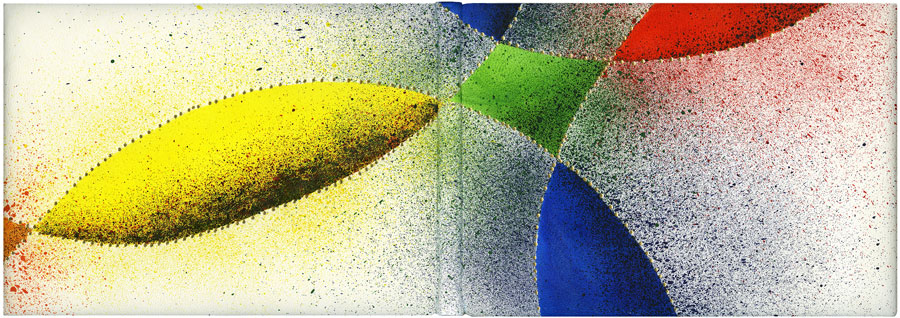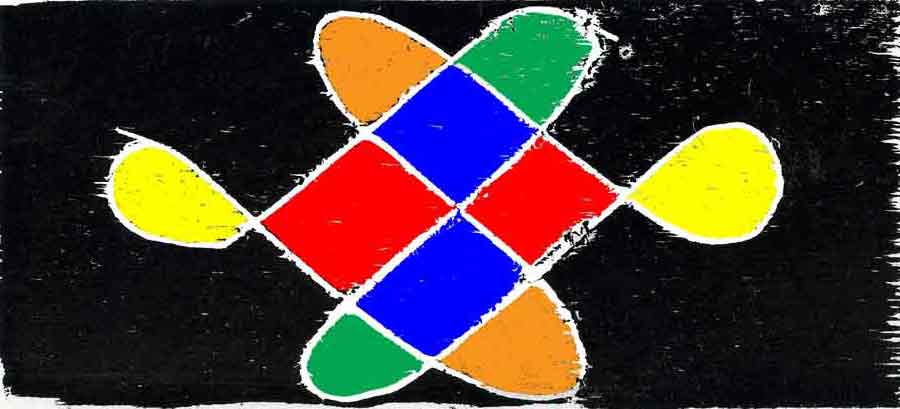Indian curries were voted Britain’s favourite dish for many years. No surprise then that curry is the subject of this new book by David Esslemont, whose passion for food, cooking and making books coalesced in 2013 with Chili: a pictorial recipe.
There are many different ways to cook curry – this transcript of a conversation with a taxi driver describes just one approach and was recorded at 4.30 a.m. while travelling between terminals at London’s Heathrow airport.
The woodcuts are based on Kolam, traditional Indian designs that are created outside homes to bring prosperity and ward off evil spirits.
Edition details
Hand printed from the original wood- blocks, the text from polymer plates, 175 x 254 mm ( 7 x 10 ins) landscape, 24pp, 10 woodcuts.
Edition of fifty copies:
Five deluxe copies – $3600
Bound in white alum-tawed goatskin with a design painted in acrylic ink based on one of the Kolam woodcuts, created with toothbrushes and stencils, with gold tooling. The design continues inside the covers as an outline of gold dots on the doublures, so “closing” the cells of the Kolam to keep out the evil spirits. Sewn on linen tapes with hand-sewn headbands and leather-jointed Indian handmade-paper endleaves, in a felt-lined cloth-covered drop-back box.
Forty-five regular copies in printed cloth-covered boards – $300.
Prints
The woodcuts are available as signed prints on sheets 7 x 10 inches (landscape), editions of 24, unmounted. $80












